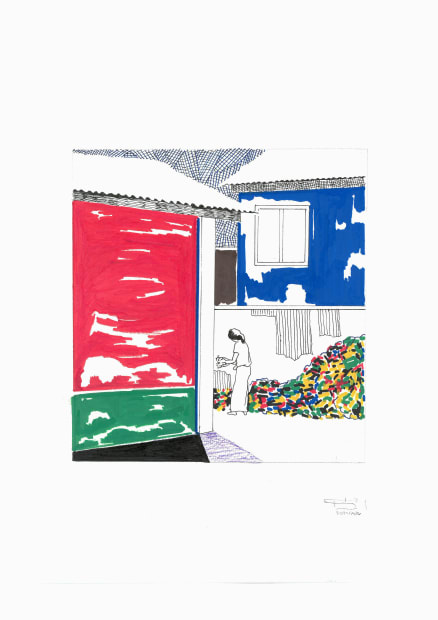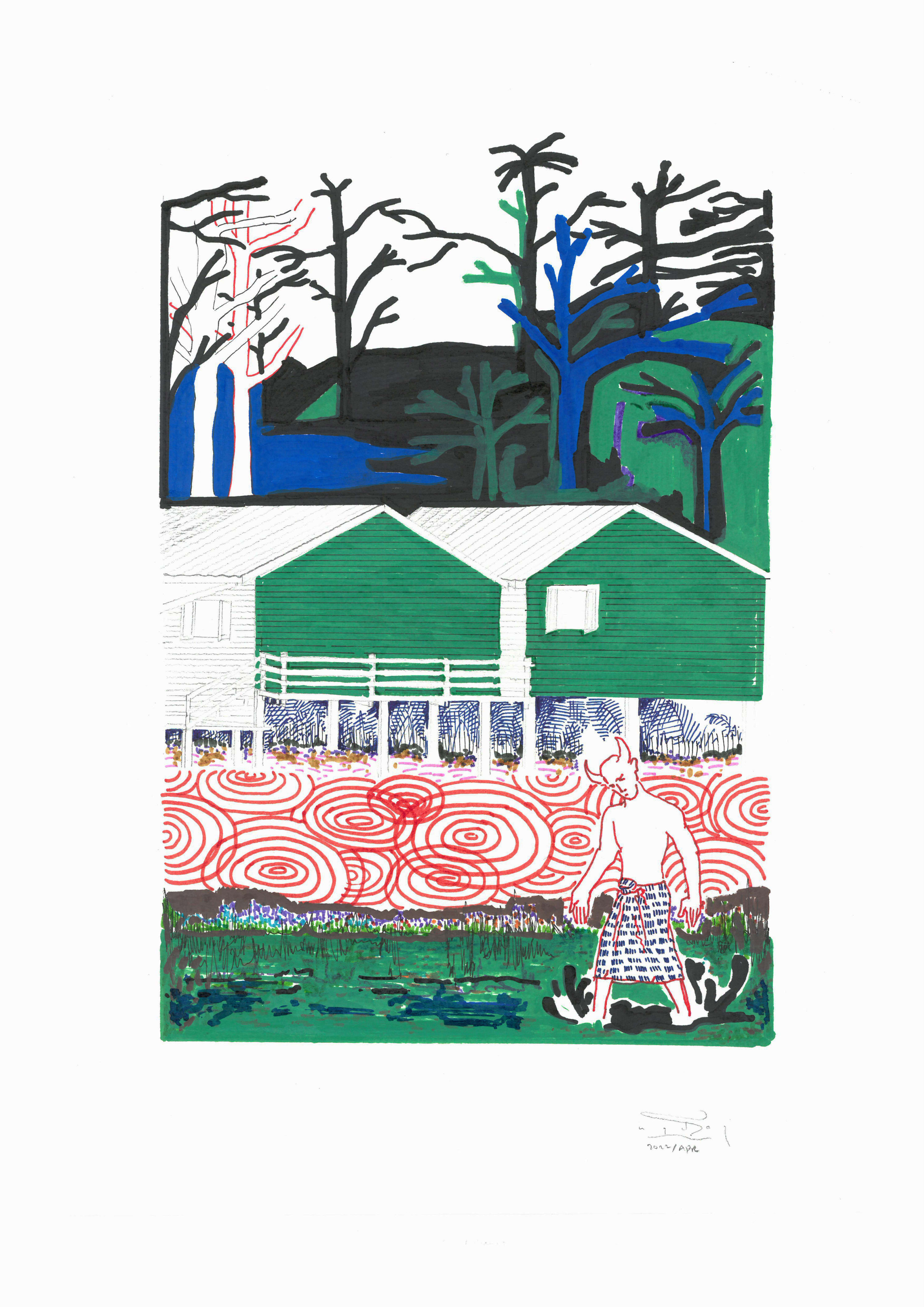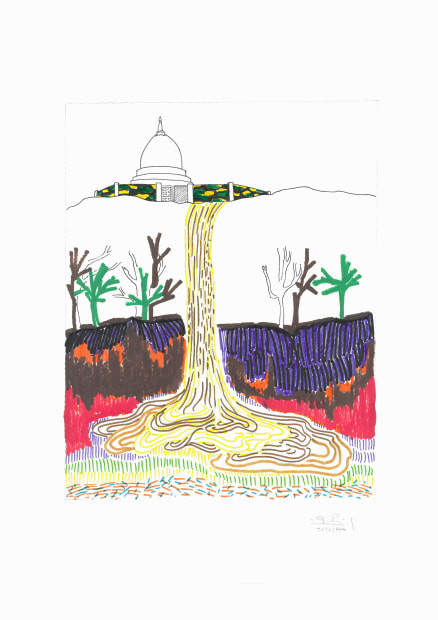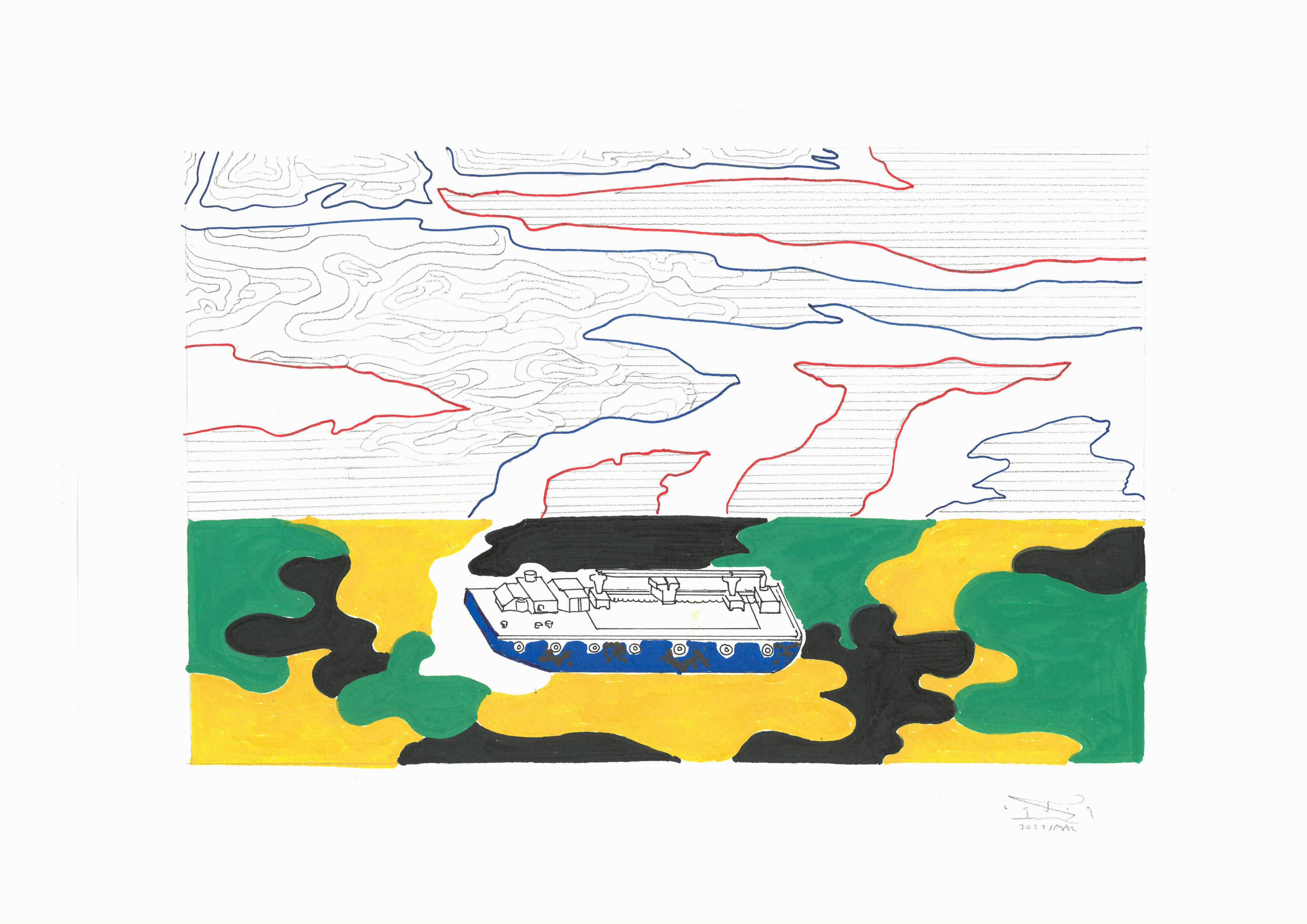-
"I saw lighthouses, the purple Pa-dauk and a rich diversity of plants and flowers, new construction sites, war refugee camps, flooded plains and beautiful rivers, bomb pits on farmland (which reminded me of bomb ponds in Vietnam), military barracks, hills and magnificent lakes, amazing architecture from the 17th and 18th centuries, and gun-carrying men."
-
I went on a trip to the Arakan Land in April 2022, almost a year after a series of wars broke out between the Arakan Army and the Bamar Military in the area. During my trip which took me from Sittwe to Mrauk-U and all the small Arakanese towns on the way, I saw lighthouses, the purple Pa-dauk and a rich diversity of plants and flowers, new construction sites, war refugee camps, flooded plains and beautiful rivers, bomb pits on farmland (which reminded me of bomb ponds in Vietnam), military barracks, hills and magnificent lakes, amazing architecture from the 17th and 18th centuries, and gun-carrying men. I heard the music and laughter coming from the Thingyan-revelers, the songs of birds and the sound of leaves, local Arakanese speaking their language beautifully, local folk discussing the war and racial conflicts, the sound of friction coming out of the conversation between progressive youth and older generation. There I smelled the aroma of the famous B.O.B marijuana, the fragrance of flowers, the smell of earth, and the smell of tension and fear. I sketched down in my book things that hovered over my senses. I used more colors than before. On this trip, I brought with me a 7 x 10 inch drawing book in which I drew the images. Then when I got back home, I redid 20 of them on 27.5 x 37.5 cm cold-pressed fine arts paper.
-
 Maung DayA Tuk-Tuk Ride in Sittwe, 2022Mixed media on paper27.5 cm x 37.5 cm
Maung DayA Tuk-Tuk Ride in Sittwe, 2022Mixed media on paper27.5 cm x 37.5 cmWe rented a tuk-tuk to take us from Sittwe to a river, on the other side of which lies a village called Phyu Chaung. My wife’s Arakanese relatives live there. The tuk-tuk drove past a score of military barracks and bases which cover thousands of acres of land, showing the mighty presence of the Bamar Army in the area. The road is lined with not just trees, but with many camouflage-painted gates and fences. The greens and the browns of the war camouflage paint mingles with the greens and the browns of the trees in a blurry haze of my vision. I could see and sense how bitterly the local Arakanese detest the presence of those infrastructures. My wife’s uncle mumbled on about the imminent restart of the wars, reflecting the anxieties of the local Arakanese. The wars have halted temporarily, with the Bamar Army shifting their entire focus on crushing the revolutionary forces of the Spring Revolution. The ceasefire signals the rise of the Arakanese Army and instills hopes in the local Arakanese for a better future with more freedom and self-determination.
-
 Maung DayA Barge in the Gispanadi RiverMixed media on paper27.5 cm x 37.5 cm
Maung DayA Barge in the Gispanadi RiverMixed media on paper27.5 cm x 37.5 cm -
The Arakanese Land is full of flooded plains, and numerous streams and rivers snake about throughout the land. This was my first visit to the area in my entire life, and my former efforts to go there were stopped either by myself or my Arakanese friends worrying about my security, given my Indian ethnic background. The landscapes did fascinate me, and inspired me to make sketches. I saw the well-known Gispanadi River, and a barge slowly moving in it. Beyond the river are expanses of farmland and watersheds. I wanted to capture the texture of the land and the atmosphere, and make it colorful reflecting on the current celebratory mood of the local people.
-
 Maung DayA Scavenger in Muslim Quarter of SittweMixed media on paper37.5 x 27.5 cm
Maung DayA Scavenger in Muslim Quarter of SittweMixed media on paper37.5 x 27.5 cm -
 Maung DayAssassination on the Kitchen FloorMixed media on paper37.5 x 27.5 cm
Maung DayAssassination on the Kitchen FloorMixed media on paper37.5 x 27.5 cm -
 Maung DayThe Guest at NightMixed media on paper37.5 x 27.5 cm
Maung DayThe Guest at NightMixed media on paper37.5 x 27.5 cmThe nights in the Arakan Land – and in other places throughout the country – are the stuff of horror and destruction. Thieves, thugs, military men, and revolutionaries on secret nocturnal missions come out and prowl in the shadows. The streets are empty and the communities fall asleep shrouded in the darkness of fear. The next morning, there will be news shared at the markets, in the teashops and on the streets – the news of murders, thefts, arson and so on. I wanted to capture that reality in a drawing by creating a metaphorical devil-like creature roaming the marshes and the quiet, dark neighborhoods. The landscape in this drawing came from a photograph I took in a village.
-
 Maung DayFigures Beyond the Brick Wall, 2022Mixed media on paper37.5 x 27.5 cm
Maung DayFigures Beyond the Brick Wall, 2022Mixed media on paper37.5 x 27.5 cm -
 Maung DayThe Inside of a Local Arakanese RestaurantMixed media on paper27.5 cm x 37.5 cm
Maung DayThe Inside of a Local Arakanese RestaurantMixed media on paper27.5 cm x 37.5 cmAfter Sittwe, we rented a car and drove to Mrauk-U, the famous ancient city, passing numerous temples and pagodas, bomb pits, military posts, and small towns on the way. In Mrauk-U, my wife and I went to a local restaurant. They had steel pots with different dishes in, put on a table. I approached and asked the woman standing between the pots and the kitchen about the dishes. She looked at me briefly and went on doing the stuff she was doing. Then a girl holding plates of rice walked past me. I stopped her and asked about the menu, she also did not seem willing to talk to me. This baffled me a bit, and made me think why I was ignored. Was it because I could not communicate in the local language, or was it because they were afraid of strangers, or was it my Indian looks? I finally managed to get some food, and while we were eating, I noticed that a lot of people came to the restaurant, a lot of them not speaking the local language. The people of this restaurant are in fact used to having strangers and non-locals. When we paid, my wife was furious because they overcharged us, something that was confirmed later when we went there again with a few local friends. This was one of several incidents in which I felt discriminated and very uncomfortable.
-
 Maung DayOgre on Pedestal in War Colors, 2022Mixed media on paper37.5 x 27.5 cm
Maung DayOgre on Pedestal in War Colors, 2022Mixed media on paper37.5 x 27.5 cm -
 Maung DayTemple Guarded by a Fence in War ColorsMixed media on paper37.5 x 27.5 cm
Maung DayTemple Guarded by a Fence in War ColorsMixed media on paper37.5 x 27.5 cm -
I made two sketches of a barge in the Gispanadi River. They both are my attempts to capture the political and geographical textures of the land and water. While the other one touches more on the positives, this one peels off the surface of the land to reveal the anxieties around war. When I was there, I observed that there was always a sense of foreboding in the conversations of local Arakanese. They were looking forward to a better future under the AA, but they also feared the worst because they knew a war could break out anytime.
-
 Maung DayTo the Other Side of the BayMixed media on paper37.5 x 27.5 cm
Maung DayTo the Other Side of the BayMixed media on paper37.5 x 27.5 cm -
 Maung DayUntil You Made Us Your Problem, 2022Mixed media on paper37.5 x 27.5 cm
Maung DayUntil You Made Us Your Problem, 2022Mixed media on paper37.5 x 27.5 cm -
MAUNG DAY (b.1979, Myannmar) is an acclaimed poet and visual artist hailing from Myanmar. He has penned a number of poetry books in Burmese, and some of his English poems have appeared in journals such as Guernica, AAWW’s The Margins, The Awl, Shampoo, Mekong Review, and more. His art practice encompasses drawing, painting, installation, video, and photography. He has shown his artworks in Japan, Hong Kong, Vietnam, Singapore, Thailand, Germany, Australia, and Myanmar. His last exhibition entitled You invented this lie for whom? was held in Yangon, taking place in February 2022.
Maung Day | YANGON – SITTWE – MRAUK-U
Past viewing_room











